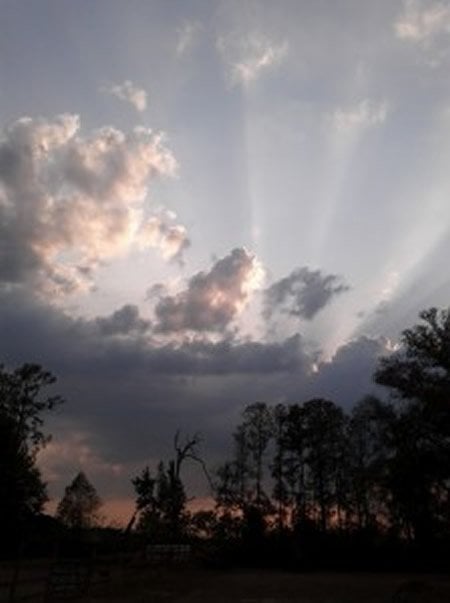Men and persons age 65 and older who have access to natural surroundings, whether it’s the green space of a nearby park or a sandy beach and an ocean view, report sleeping better, according to a new University of Illinois study published in Preventive Medicine.
“It’s hard to overestimate the importance of high-quality sleep,” said Diana Grigsby-Toussaint, a U of I professor of kinesiology and community health and a faculty member in the U of I’s Division of Nutritional Sciences. “Studies show that inadequate sleep is associated with declines in mental and physical health, reduced cognitive function, and increased obesity. This new study shows that exposure to a natural environment may help people get the sleep they need.”
In the study, Grigsby-Toussaint worked with both U of I researchers and scientists from the New York University School of Medicine. The team used data from the CDC’s Behavioral Risk Factor Surveillance System, which surveyed 255,171 representative U.S. adults, to learn whether there was an association between self-reported days of insufficient sleep and access to green space. The team also used a USDA index that scores the country’s geographical areas for their natural amenities, using hours of sunlight, which is important in regulating a person’s circadian rhythm, and temperature.

In response to the survey question about sleep quality in the last month, the researchers found that the most common answer was that respondents had slept poorly for less than one week.
“Interestingly, though, across the entire sample, individuals reporting 21 to 29 days of insufficient sleep consistently had lower odds of access to green space and natural amenities compared to those reporting less than one week,” she said.
For men, the relationship between sleep and exposure to green space was much stronger than for women. And males and females 65 and over found nature to be a potent sleep aid, she added.
Grigsby-Toussaint noted that living near green landscapes is associated with higher levels of physical activity and that exercise in turn predicts beneficial sleep patterns.
But men appeared to benefit much more from their natural surroundings. The researcher speculated that women may take less advantage of nearby natural settings out of concern for their safety, but she added that more research is needed.
The finding should be a boon for people who are having trouble sleeping as they age. “If there is a way for persons over 65 to spend time in nature, it would improve the quality of their sleep–and their quality of life–if they did so,” Grigsby-Toussaint said.
The study points to the importance of conserving nature in general, she added.
“And, specifically, our results provide an incentive for nursing homes and communities with many retired residents to design buildings with more lighting, create nature trails and dedicated garden spaces, and provide safe outdoor areas that encourage outdoor activity for men and women,” she said.
Grigsby-Toussaint is the lead and corresponding author; co-authors include Kedir N. Tun and Mark Krupa of the University of Illinois and Natasha J. Williams, Seithikurippu K. Pandi-Perumal, and Girardin Jean-Louis of the Center for Healthful Behavioral Change, New York University School of Medicine.
Funding: The National Institutes of Health funded the study.
Source: Phyllis Picklesimer – University of Illinois
Image Source: The image is credited to NeuroscienceNews.com
Original Research: Abstract for “Sleep insufficiency and the natural environment: Results from the US Behavioral Risk Factor Surveillance System survey” by Diana S. Grigsby-Toussaint, Kedir N. Turi, Mark Krupa, Natasha J. Williams, Seithikurippu R. Pandi-Perumal, and Girardin Jean-Louis in Preventive Medicine. Published online July 17 2015 doi:10.1016/j.ypmed.2015.07.011
Abstract
Sleep insufficiency and the natural environment: Results from the US Behavioral Risk Factor Surveillance System survey
Background
Exposure to the natural environment may improve health behaviors and mental health outcomes such as increased levels of physical activity and lower levels of depression associated with sleep quality. Little is known about the relationship between insufficient sleep and the natural environment.
Purpose
To determine whether exposure to attributes of the natural environment (e.g., greenspace) attenuates the likelihood of reporting insufficient sleep among US adults.
Methods
Multiple logistic regression models were used to explore the association between self-reported days of insufficient sleep (in the past 30 days) and access to the natural environment in a multi-ethnic, nationally representative sample (n = 255,171) of US adults ≥ 18 years of age enrolled in the 2010 Behavioral Risk Factor Surveillance System.
Results
Using 1-to-6 days of insufficient sleep as the referent group for all analyses, lower odds of exposure to natural amenities were observed for individuals reporting 21-to-29 days (OR = 0.843, 95% confidence interval (CI) = 0.747, 0.951) of insufficient sleep. In stratified analyses, statistically significant lower odds of exposure to natural amenities were found among men reporting 7-to-13-days (OR = 0.911, 95% CI = 0.857, 0.968), 21-to-29-days (OR = 0.838, 95% CI = 0.759, 0.924), and 30-days (OR = 0.860, 95% CI = 0.784, 0.943) of insufficient sleep. Greenspace access was also protective against insufficient sleep for men and individuals aged 65 +.
Conclusions
In a representative sample of US adults, access to the natural environment attenuated the likelihood of reporting insufficient sleep, particularly among men. Additional studies are needed to examine the impact of natural environment exposure on sleep insufficiency across various socio-demographic groups.
“Sleep insufficiency and the natural environment: Results from the US Behavioral Risk Factor Surveillance System survey” by Diana S. Grigsby-Toussaint, Kedir N. Turi, Mark Krupa, Natasha J. Williams, Seithikurippu R. Pandi-Perumal, and Girardin Jean-Louis in Preventive Medicine. Published online July 17 2015 doi:10.1016/j.ypmed.2015.07.011






